In this Issue
- Apple, Pear: codling moth updated dates
- Peach, Nectarine, Apricot: peach twig borer spray dates for some Utah locations
- Cherry: monitor interior leaves for powdery mildew
- Berries: raspberry horntail prevention coming up
- Production Information: thinning fruit
APPLE, PEAR
Codling Moth
updated codling moth treatment dates
View a pdf of the spray timing table. Be sure to read the instructions at the top of the page, for how to read the table.
Treatment
- See this post for spray options for backyard growers (after this link opens, scroll down to Codling Moth heading and see table).
- Options for commercial growers.
PEACH/NECTARINE, APRICOT
Peach Twig Borer
nearing time to treat in some Utah locations
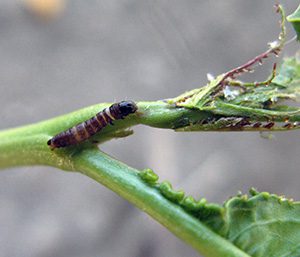
View a pdf of the spray timing table. It provides dates to start treating the first generation for a few Utah locations. The “start spray date” is provided as a range. Select the earlier date if your trees have had higher damage in the past, and the later date if damage was minimal.
Peach twig borer affects peaches, nectarines, and apricots. Unlike codling moth on apples, this pest is more sporadic in Utah, and some locations have a low enough population that trees do not need to be treated at all.
Under high twig borer populations, you may need to apply insecticide regularly so that your tree is protected throughout each generation. In areas of low pest pressure, some growers can get away with a single application for each generation (up to 2 well-timed sprays).
Treatment
- Backyard growers: The same product you are using for codling moth can be used for peach twig borer. See this post for spray options (after this link opens, scroll down to Codling Moth heading and see table).
- Options for commercial growers.
CHERRY
Powdery Mildew on Commercial Tart Cherry
Monitor interior leaves for new infections
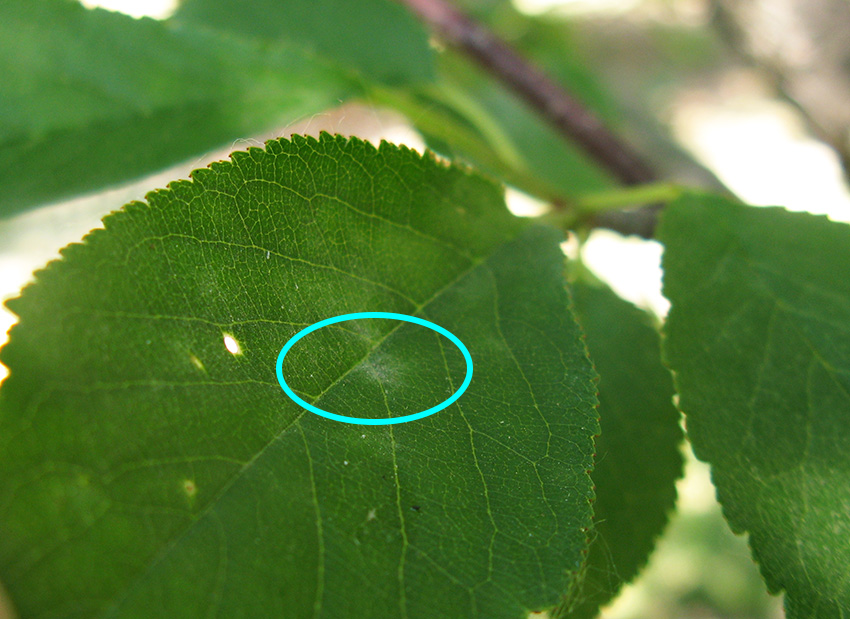
Cherry powdery mildew lesions are showing up now or within the next week on tart cherries. The fungus overwinters as resting spores in fallen leaves, on the orchard floor, or in bark crevices. Spores are activated by increased humidity due to spring rains and sprinkler irrigation and cause infections.
Leaves, fruit, and fruit pedicels can all become infected. Monitor for the earliest infections on leaves near the trunk, and on the lowest, interior twigs (where humidity is highest).
Treatment
It is very important to apply a fungicide as soon as powdery mildew is detected because prevention is the best management tactic. Continue sprays at 7 to 14-day intervals until growth hardens off.
Commercial growers can find options by clicking here. Michigan State University report that the pre-mixes, Luna Sensation and Merivon, are excellent options
BERRIES
Raspberry Horntail
Prevent egg-laying by treating for adults
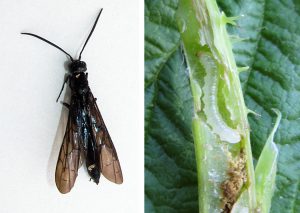
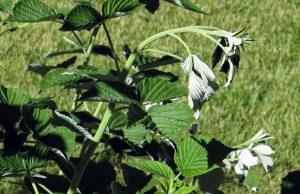
Raspberry horntail is a sawfly that lays eggs inside the tops of raspberry canes. The eggs hatch into larvae that then feed within the upper canes, causing the tops to wilt and die.
Adult horntails will begin emerging from canes that were infested last year, starting May 29 in the most Wasatch Front locations to June 10 in cooler locations.
Treatment
The best treatment option is to diligently prune out the tops of wilting canes every year. This will reduce populations significantly.
Otherwise, an insecticide application to prevent egg-laying should be applied by the dates noted above. Synthetic pyrethroids (GardenTech Sevin or Spectracide Triazicide) or carbaryl are effective. Spinosad is an organic option, but unproven.
A second application should be applied 10-14 days later depending on product residual and when bloom time is happening. (Avoid treating during bloom.)
OTHER INFORMATION
Thinning Fruit
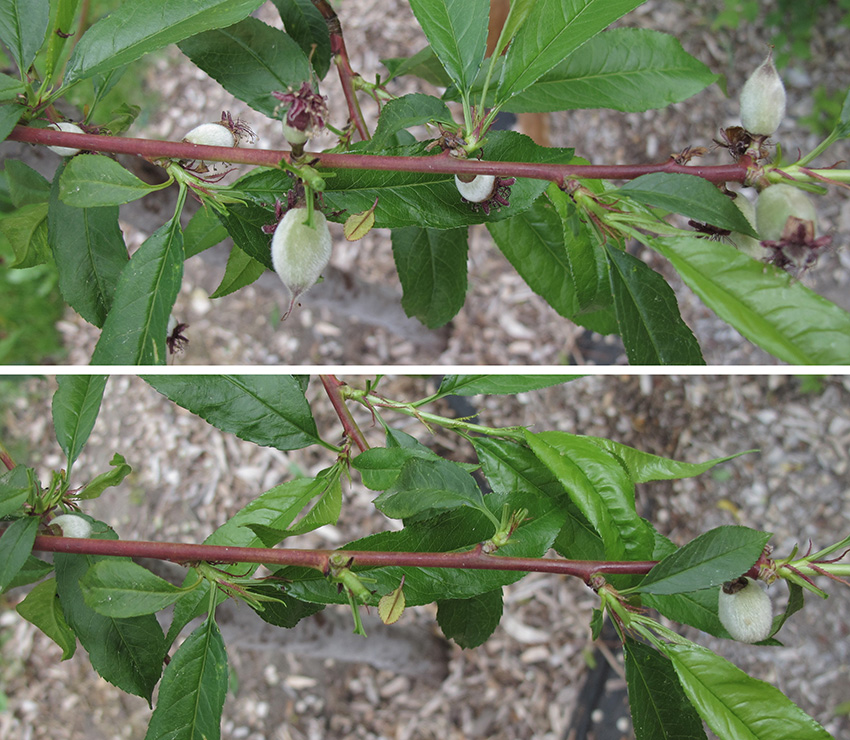
Thinning apple and peach/nectarine fruit is very important, and results in the following:
- Improved fruit size and quality. Trees have finite resources and can make fewer large fruit or many small fruit. Reducing the number of fruit early will increase the size of the remaining fruit. When fruit loads are within the ‘carrying capacity’ of a tree the fruit are sweet, juicy, and aromatic (flavorful).
- Flowers for next year. The developing seeds of fruit are rich sources of plant hormones. These hormones cause the fruit to enlarge. They also interfere with the creation of flower buds that will result in fruit the following year. Reducing the number of fruit on a tree this year will allow flower buds that precede next year’s crop.
- Prevention of limb breakage. When trees are overloaded the weight of the fruit can cause limbs to bend beyond their limits resulting in broken limbs.
Apples and pears should be thinned when they are 8 mm to 0.5-inch in diameter. Leave only one fruit per flower cluster and thin clusters so they are no closer than 6 inches apart. In apples, the center fruit (king fruit) will be the largest and should be retained. Remove the side fruit.
In pears, the lowest fruit will be the largest and other fruitlets should be removed. Small scissors can help to remove individual fruit.
Peaches should be thinned so that individual fruit are no closer than 6 inches apart. They are normally thinned by hand by twisting fruit to be removed. Leave no more that 100 to 150 peaches on mature trees. Young trees will have proportionally fewer fruit.
For all new plantings (in 2022 and spring of 2023), remove all fruits for one to three years to help the tree become established and develop a healthy root system.
